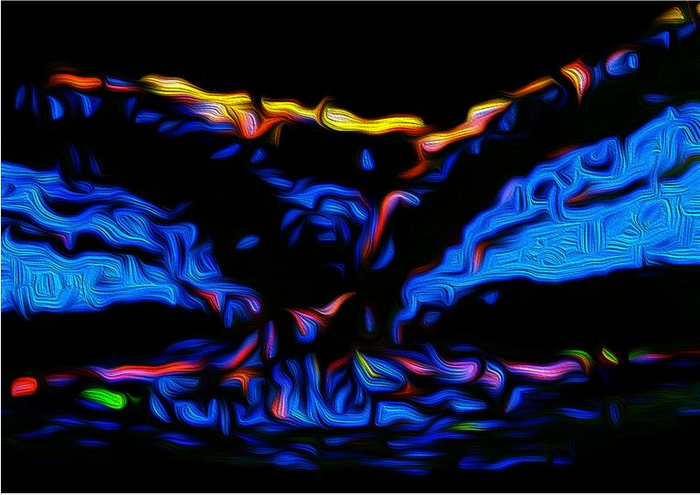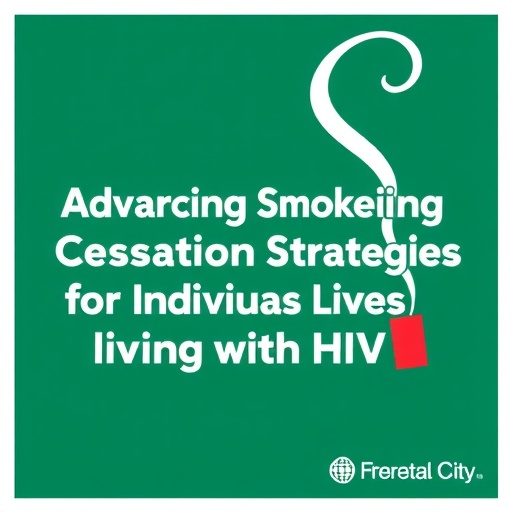In a study of eye fluid from 38 patients, Johns Hopkins Medicine researchers say they have found that levels of a specific protein appears to help accurately predict whether people with the wet form of age-related macular degeneration may need lifelong, frequent eye injections to preserve vision or if they can be safely weaned off the treatments.

Credit: Alexander Sodhi, McDonogh School
In a study of eye fluid from 38 patients, Johns Hopkins Medicine researchers say they have found that levels of a specific protein appears to help accurately predict whether people with the wet form of age-related macular degeneration may need lifelong, frequent eye injections to preserve vision or if they can be safely weaned off the treatments.
The researchers say the protein could also be targeted by new therapies to halt vision loss among patients with the disorder, caused by abnormal growth of blood vessels that leak fluid or bleed into the portion of the retina needed for central vision
The researchers’ findings were published online June 2 in the Journal of Clinical Investigation Insight.
Overall, age-related macular degeneration is the most common cause of vision loss among people age 50 and older, affecting an estimated 7.3 million individuals in the United States.
Standard treatment of wet age-related macular degeneration requires monthly or twice-monthly eye injections of so-called anti-VEGF drugs that slow or stop the growth of leaky blood vessels and, in most cases, stave off further vision loss.
Because the injections are inconvenient, costly, uncomfortable, and carry risk of infection, retinal detachment and other side effects,
Sodhi’s research team has long been studying ways to identify subgroups of patients who can safely reduce – or even cease – eye injection therapies without further vision loss.
“The proteins in the eye may help us identify patients who can sagely be weaned off these therapies or transition to other, new ways of delivering these drugs to the retina,” says Akrit Sodhi, M.D., Ph.D., associate professor of ophthalmology and the Branna and Irving Sisenwein Professor in Ophthalmology at the Wilmer Eye Institute at the Johns Hopkins University School of Medicine.
For the current study, Sodhi’s team investigated whether measurable levels of certain proteins in the eye could be used as predictors, known as biomarkers, of disease stabilization or progression despite treatment.
First, the team collected samples of eye fluid from 38 patients at the beginning of their treatment for macular degeneration at the Wilmer Eye Institute between 2013 and 2020 in two Maryland locations. These patients were then grouped based on the frequency with which they required treatment at the end of one year.
The researchers then screened the samples of each of these groups for proteins linked to the development of abnormal blood vessels. Among the proteins present, the researchers found that one, named angiopoietin-like 4, was present at higher levels in patients who required monthly treatment when compared with patients who were eventually able to reduce the frequency of injections or even stop treatment without further vision loss.
Using statistical models, Sodhi’s team found that relatively higher levels of angiopoietin-like 4 (higher than 4.22 ng/mL) accurately predicted actual clinical outcomes in the patient population, identifying with 91% sensitivity those patients who would continue to require monthly eye injections to preserve their vision.
However, they found that measuring only angiopoietin-like 4 led to many false-positives, with one third of the patients flagged by the test not requiring monthly therapy.
In a bid to improve the accuracy of the prediction model, they paired measurements of angiopoietin-like 4 with VEGF, the protein specifically targeted by current wet macular degeneration treatments. With both of these proteins, the researchers were able to correctly identify with 76% sensitivity and 85% specificity patients who likely need monthly eye injections; this group of wet macular degeneration patients could benefit from newer longer acting anti-VEGF therapies.
In animal experiments, the researchers next examined whether blocking angiopoietin-like 4 in the eye could be a potential therapeutic approach for wet age-related macular degeneration.
The researchers used nanoparticles developed in collaboration with Jordan Green, Ph.D., Professor of Biomedical Engineering at the Johns Hopkins University School of Medicine, to deliver RNA interference (RNAi) designed to target the expression of either angiopoietin-like 4 or VEGF in the retina in mice with eye lesions similar those in patients with wet age-related macular degeneration.
Mice that received either the angiopoietin-like 4-blocking RNAi treatment or the VEGF-blocking RNAi treatment, both had lower levels of abnormal blood vessel growth than mice which received control treatment. However, in mice that received RNAi targeting both VEGF and angiopoietin-like 4, the treatment showed an additive effect, with even lower abnormal blood vessel growth than RNAi targeting either protein alone.
As an alternative to using RNAi as a therapy, the researchers tested a naturally-found protein called soluble neuropilin, which the researchers have previously shown have a quenching effect on VEGF and angiopoietin-like 4 in studies in diabetes. The researchers tested soluble neuropilin by injecting the protein into the eyes of mice. The test yielded similar results as the RNAi, effectively treating the growth of the abnormal blood vessels, revealing that targeting both angiopoietin-like 4 and VEGF together leads to effective relief of wet age-related macular degeneration lesions.
Collectively, these experiments provide the foundation for studies examining therapies targeting both VEGF and ANGPTL4, and help explain why elevated levels of these two proteins in the eyes of patients predicts how patients respond to current therapies targeting only VEGF.
“Angiopoietin-like 4 and VEGF act synergistically to create more severe choroidal neovascular lesions in the eye. They could, potentially, be used as both a biomarker as well as a treatment target,” says Sodhi.
Other researchers who contributed to this study include Xuan Cao, Jaron Castillo Sanchez, Kathleen Jee, Murilo Rodrigues, Chuanyu Guo, Jordan Vancel, Deepak Menon, Noore-Sabah Khan, Stephany Tzeng, Yassine Daoud, Jordan Green and Gregg Semenza of Johns Hopkins; Yu Qin of the Johns Hopkins University School of Medicine and the Fourth Affiliated Hospital of China Medical University; Aumreetam Dinabandhu of the Johns Hopkins University School of Medicine and the University of Maryland; Jing Zhang of the Johns Hopkins University School of Medicine and Sun Yat-Sen University, Guangzhou, China; and Tao Ma and Silvia Montaner of the University of Maryland.
This work was supported by the National Eye Institute (R01EY029750, R01EY025705, R01EY031097, EY001765), the Research to Prevent Blindness, Inc. Special Scholar Award, the Sybil B. Harrington Stein Innovation Award, the Alcon Research Institute, and the Branna and Irving Sisenwein Professorship in Ophthalmology.
Journal
JCI Insight




